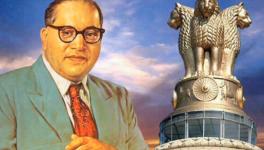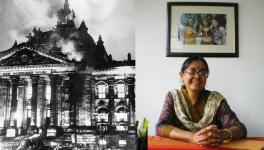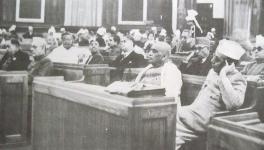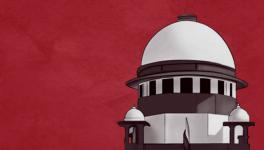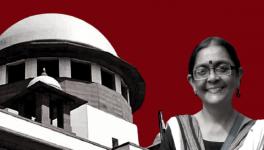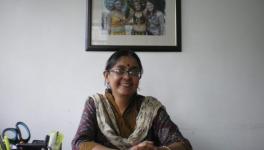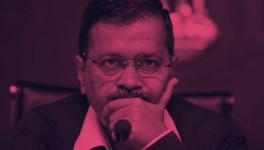Lessons for Historians from the Ayodhya Imbroglio
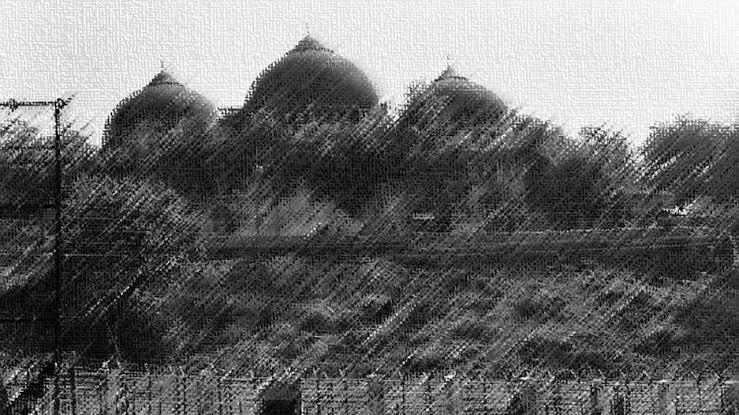
“Babur Ki Aulad” (Sons of Babur)! This remained a metaphor for majoritarian vilification of India’s Muslims. This emerged with a falsehood propagated and internalised that the Babri Masjid was built in 1528 by demolishing pre-existing religious structures in Ayodhya. Professional historians kept disproving it. Majoritarian politics, however, triumphed against historical truth.
The genesis of this lies in colonial power-play. This falsehood came to be manufactured, circulated and asserted only after the British intruded into India. Otherwise, for around 350 years during 1528-1855, no such belief or faith was in existence.
This colonially designed destruction of social harmony remains inadequately propagated and internalised by us. An important reason behind this inadequacy is: we prioritise the study and teaching about 19th century, for its economic history, political history and for socio-religious reform movements. Social history and history of everyday lives in 19th century India remain least attended in our curricula.
While debating and scrutinising many serious flaws in the judgment of November 9, India, as a multi-religious society, has to move ahead. Having learnt bitter lessons, we also need to expose and popularise this colonially ruptured social harmony.
British roles in creating and perpetuating disharmony can be exposed in much better way if social histories, say for example, of Awadh and Mysore, were to be studied in certain ways. How did the British project and mould Hindu-Muslim relations after annexing Awadh (1856) and slaying Tipu Sultan (1799)?
I deeply feel that practitioners of history need to introspect as to whether they too, as professionals, failed in countering and resisting, this passionate politics of propagating falsehood, with greater degree of effectiveness. I have a strong feeling that most of the educational institutions in India do not teach history of these two centuries the way this should really be taught.
I am confessing this out of my experiences and observations. I am an alumnus of a highly reputed department of history, AMU, where I also teach now. Before that, I was a student of a college in rural North Bihar.
Good number of my teachers, and now my colleagues, appear to have been shying away from teaching many such things pertaining to the 19th-20th centuries. While less competent and less accomplished teachers-cum-researchers have their own inherent weaknesses, the accomplished ones often look down upon the practice of disseminating their knowledge among the students, as well as common people, in an English prose comprehensible for them.
Not to say of the fact that their reach through vernaculars is even far lesser. They write for and talk among themselves. The academic snobbery and contempt against popular interventions is expressed through an expression, “Oh! Sh*t! This is journalistic”!
Things have further deteriorated, now. There is a crowd of academics, even in the renowned centres. They can neither publish in top-tier journals, nor are they capable of writing popular pieces. This is going to further add to the problems.
Indeed, our accomplished historians, of liberal-left persuasions, did a lot of hard work in countering the myth in the late 1980s and early 1990s. But most of such interventions remained confined to elite institutions, in English language, while the vernacular space was viciously communalised by the vernacular media. Some of the most popular Hindi dailies in North India were busy in propagating such falsehoods, and thereby rocking the social harmony.
Till the 1980s, the ruling Congress seems to have outsourced the domain of knowledge and culture to them, to a large extent. Some of the Left-leaning bodies were, of course, coming out with pamphlets, booklets, but the biggest and oldest ruling party was hardly making interventions in these domains. Regional outfits of the 1990s had its own priorities of “correcting” the statistics in power-share while happily ignoring such interventions in the domain of knowledge and culture.
The historians therefore must subject themselves to: self-introspection and stock-taking, as to what lessons do this Ayodhya imbroglio, teach them, and what kinds of challenges are there before the practitioners of History in India?
The apex court verdict of November 9, also, seems to have been carried away by the colonially manufactured myths. Rather than dismissing the myths, concoctions, and falsehoods created by the colonial ethnographers, travellers, administrators, with malicious motives, the verdict appears to be providing these myths even more enhanced credence.
At the same time, the verdict also underlines that such accounts should be read with “circumspection”, and that at the most these can be used merely as “corroborative material to evidence which emerges from the record” (Part P, page 908). Not only this, even pertaining to the archaeological evidences the verdict clearly says, “a finding of title cannot be based in law on the archaeological findings which have been arrived at by ASI.
Between the 12th century to which the underlying structure is dated and the construction of mosque in the 16th century, there is an intervening period of four centuries. No evidence has been placed on the record in relation to the course of human history between the twelfth and sixteenth centuries. Title to the land must be decided on settled legal principles and applying evidentiary standards which govern a civil trial.” (p. 907, Part P).
This is yet another baffling contradiction in the verdict.
Regarding the Ayodhya imbroglio, few important colonial myth-manufacturers were:
1. Robert Montgomery Martin (1801-1868), in his 1838 account, vol. II, pp. 336-337.
2. P. Carnegy (1870): He asserted that three temples in Ayodhya were destroyed and mosques were constructed at their sites by the Moghuls. He said this on the basis of ‘locally affirmed’ information.
3. H. R. Neville (1905): In the Gazetteer of Fyzabad reproduced it verbatim.
4. A. S. Beveridge (1842-1929) also repeated this falsehood. Ironically, she was also the one who translated the Baburnama (and Humayunnama) into English, and in this account, there is no mention of the Babri Masjid.
Before them, Joseph Tiffenthaler, an Austrian Jesuit priest escaping prosecution from the Portuguese in Goa, reached Ayodhya in 1766 and 1771, and wrote an account in Latin (1786).
He, also based his account on local hearsays, and blamed Aurangzeb for having demolished ‘Ram Kot’, and also added, ‘some say it may have been Babbur’.
Let it be reiterated, this was also the time when European intrusions into Awadh affairs were increasing, particularly because of the mother-son conflict between Bahu Begum and Asafuddaulah. Bahu Begum sought the help of the Europeans. John Bristow, the British Resident and Warren Hastings, the Governor General, exploited the mother-son conflict and extracted lakhs of rupees from the mother-son duo.
It was in the latter half of 18th century, (mostly with generous funding of the Nawab Asafuddaulah to his trusted Diwan Tikait Rai, who oversaw the construction of several ghats and temples) that Ayodhya was emerging as a Hindu pilgrim centre, mostly around Hanumangarhi, and not around the spot where Babri Masjid was located. Lala Sitaram’s Ayodhya Ka Itihas (1932) also records the details.
Let us not forget the fact that only in the middle of 19th century, when British penetration had taken place that Ayodhya emerged as a popular centre of Hindu worships. In the preceding centuries, as a recently published biography of Ayodhya, by Valay Singh (Ayodhya: City of Faith, City of Discord, Aleph, 2018), demonstrates, with immensely lucid articulation. In his chapter four, navigating a wide range of sources, he brings out how during 12th-17th centuries composite culture had flourished in Ayodhya. Amir Khusrav (1253-1325), dedicates poetry to this town which was his temporary abode in 1274; called this town as a great garden, with choicest of fruits.
Why do we find histories of communal disharmony only in the 19th century? Because, the British, wrested power from the Muslim ruler of Awadh. In order to consolidate their power, they had to pit Vaishnavs against Shaivites, Hindus against Muslims, Sunnis against Shias (Awadh rulers being Shias).
In 1855 (just a year before the British would annex Awadh on the pretext of maladministration), an armed conflict between Hindus and Muslims developed around a temple at Hanumangarhi, some distance away from the Babri Masjid. With colonially manufactured half-truths, this bloody conflict is often cited as the year in which began the Ramjanmbhumi-Babri Masjid dispute.
Fact is, it was over the Hanumangarhi temple and the claims made by certain Sunnis that the Bairagis of Hanumangarhi had destroyed a mosque that existed atop it. On July 28, 1855, a Sunni Muslim, Ghulam Husain’s armed attempt to re-build mosque at the Hanumangarhi hillock suffered a rout; the Muslim retainers were chastised; took shelter inside the Babri Masjid; it remained under siege of the Hindus for three days; many Muslims were killed and buried there; this is now known as Ganj Shaheedan (Martyrs’ Quarters).
Valay Singh (p. 103) comments upon role and eye-witness account of Captain A. P. Orr in these words, “Thus, the first bloody battle in Ayodhya came to an end, with a cynical British force overseeing it from a vantage point. And once all seventy odd Muslims and many more Hindus were killed, Orr seemed to justify his inaction; in characteristically colonial style, he blamed the Hindus and Muslims for their own deaths.” Valay Singh further describes the nasty roles of the British Resident, G. B. Outram into this dispute.
Before this, in early 18th century, Ayodhya was more a centre of Shaivite-Vaishnavite violent conflicts. Swami Balanand, the chief mahant of the Galta (near Jaipur) Hanuman temple, armed the four Vaishnava sects to counter the increasing attacks by Shaiva monks. (Galta had emerged as the strongest Vaishnava centre in 1713 under the patronage of Jai Singh II; also note the fact that an important leader of the Ram Temple mobilization, the VHP’s Ashok Singhal, 1926-2015, wished his dead-body’s ashes to be parted at Galta).
Swami Balanand also took another decision of disallowing the non-Brahman and non-Kshatriya from becoming gurus. Bairagis (armed Vaishnav ascetics) had to confront Gosains (armed Shaiva ascetics, also called Sanyasis, Nagas, etc.). This conflict was also centred at Hardwar. Hastings admits that he had driven the Sanyasis out of Bengal after their rebellion during (1770-1820), and that many of them had reached Ayodhya. Colonial records do reveal that Vaishnavas were used against Shaivites in Ayodhya.
By the way, similar contrasting colonial power-play was given to the 19th century Mysore. Through architecture and iconographic memorials across the urban space a subtle but fairly visible politics of “vanquished Muslims” and “victor Hindus” was given. To quote historian Janaki Nair (Mysore Modern, 2012), “The remains of the [Tipu’s] fort at Srirangapatna, the capital of the Mysore region till 1799, are in stark contrast to the well-kept fort walls that enclose the palace complex at Mysore city”. This “had long term ideological effects among subject populations”.
In Bengal too, communally divisive literary articulations came out only in 19th century. For instance, the Anandmath (1882) of Bankim (1836-1894) and Hindutva (1892) of Chandranath Basu who was associated with Bankim’s periodical Bangadarshan, published anti-Muslim prejudices and hatred and such articulations thanked the British colonial regime to have ousted Muslim rulers.
In short, in the centuries preceding to the advent of the British and their power-play, the evolution of composite cultures and social harmony needs to be popularised and colonially induced divisiveness needs to be exposed by the historians as much inside the classrooms as in the language and media of the common masses. This may hopefully help, at least to some extent, in letting some sanity prevail at popular level.
The writer is professor of modern and contemporary Indian history at Aligarh Muslim University. The views are personal.
Get the latest reports & analysis with people's perspective on Protests, movements & deep analytical videos, discussions of the current affairs in your Telegram app. Subscribe to NewsClick's Telegram channel & get Real-Time updates on stories, as they get published on our website.










